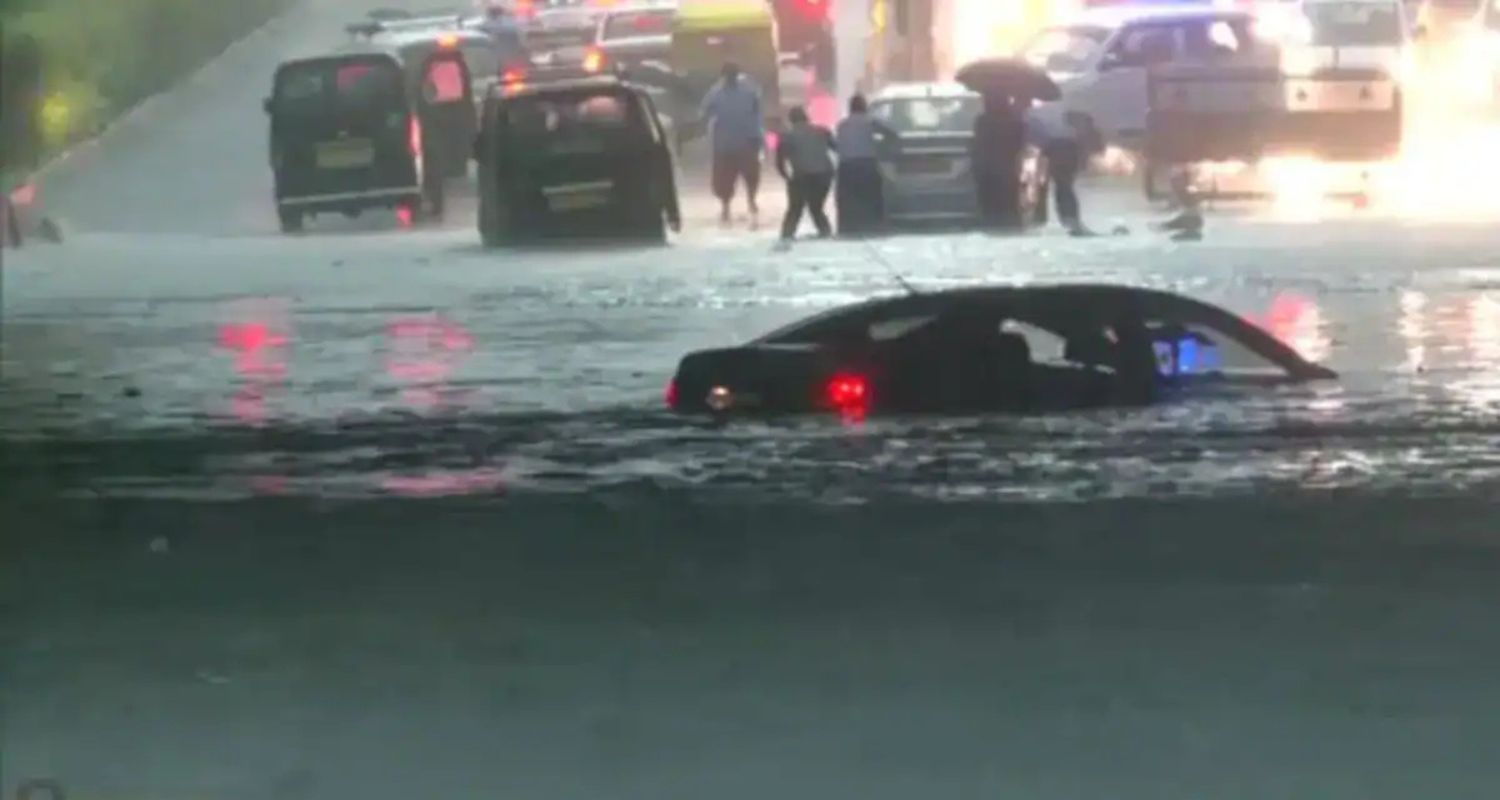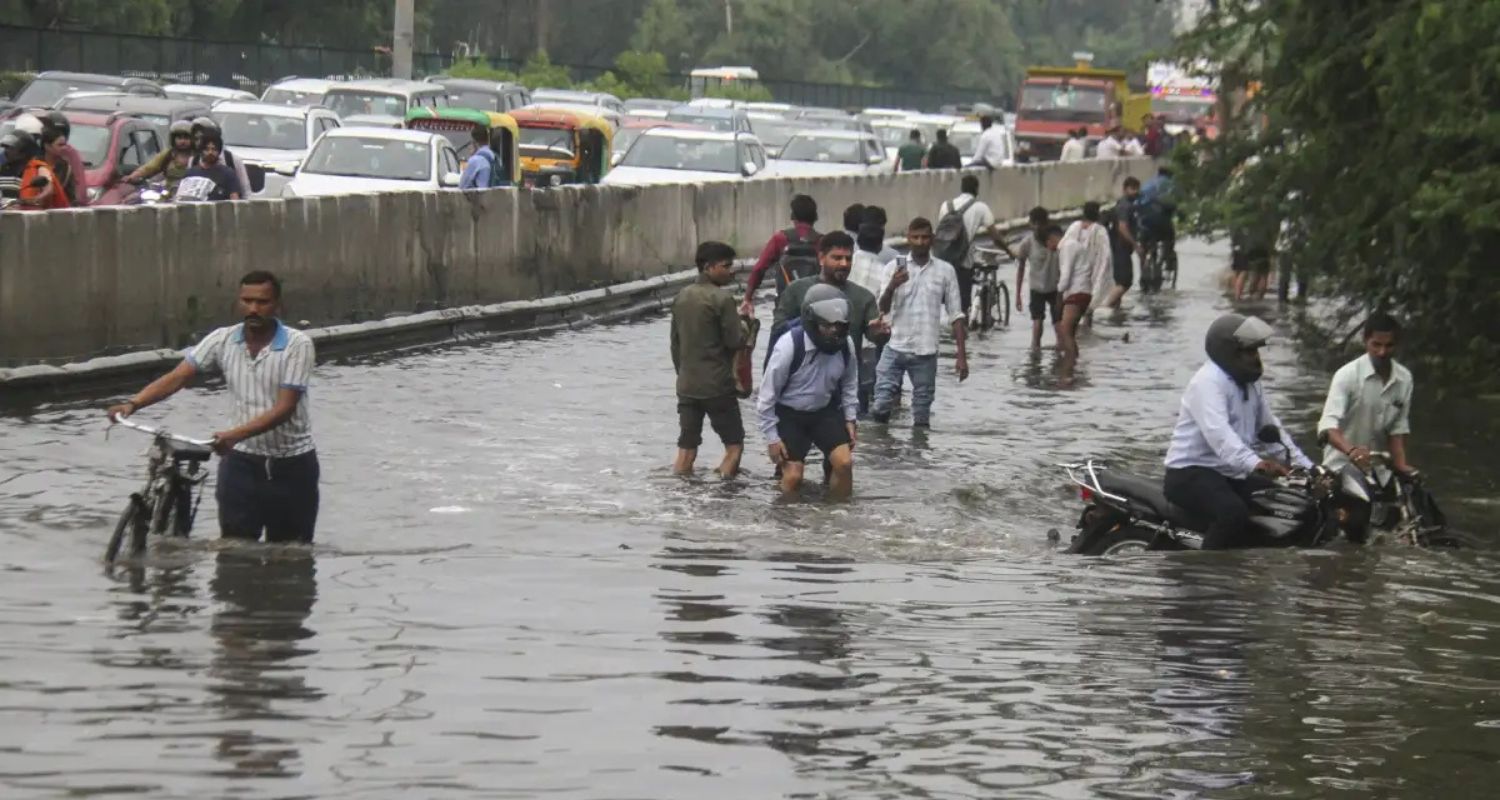Delhi and the National Capital Region (NCR) are forecast to experience further rainfall on Thursday, with the India Meteorological Department (IMD) issuing both orange and yellow alerts for various areas.
The persistent precipitation over the past several days has had a significant impact, most notably causing the Yamuna River to exceed the 207-meter mark. This marks the fifth time since 1963 that the river has reached this level.
The overflowing river has directly affected Nigambodh Ghat, Delhi's oldest and busiest cremation ground, which was forced to suspend its operations on Wednesday as floodwaters inundated the premises.
According to IMD’s nowcast warnings, a yellow alert has been issued for parts of Delhi, Noida, and Ghaziabad, predicting light rain and thunderstorms. Meanwhile, Gurugram is under a more severe orange alert, indicating the likelihood of moderate rainfall.

The weather forecast for Delhi includes thunderstorms and rain, with temperatures expected to range from a minimum of 24 degrees Celsius to a maximum of 33 degrees Celsius.
On Wednesday, the capital received continuous, intermittent rain for the third consecutive day, pushing the city's seasonal rainfall total beyond the 1,000 mm milestone. This figure surpasses the annual average rainfall of 774 mm, which had already been exceeded back in August.
As of 11:00 pm on Wednesday, the Yamuna River was flowing at 207.44 meters, nearly 1.5 meters above the designated evacuation threshold. This level is just shy of the 207.49-meter record set during the 1978 floods.
Impact on Travel and Infrastructure
While the Delhi airport has not yet issued an official notice regarding flight operations, the airline SpiceJet released an advisory for its passengers. The airline stated, "Due to bad weather in Delhi (DEL), all departures/arrivals and their consequential flights may be affected. Passengers are requested to keep a check on their flight status."
The relentless rain has also caused significant waterlogging issues across the NCR, including in Noida, Ghaziabad, and Gurugram. In response to the heavy rainfall and the IMD's forecast, schools in Noida and Ghaziabad were ordered to remain closed on Wednesday.

Widespread Flooding Across North India
The weather situation in Delhi-NCR is part of a larger crisis affecting several states in North India.
- Punjab: The state of Punjab is currently grappling with one of its most severe floods since 1988. The death toll rose to 37 on Wednesday, and the state government is conducting relief and rescue operations on an emergency footing. As an immediate measure, ₹71 crore has been released for relief and rehabilitation efforts. The heightened water levels in the Sutlej, Beas, and Ravi rivers, triggered by continuous rain in Himachal Pradesh and Jammu and Kashmir, have led to the inundation of towns and villages, disrupting daily life. As a precautionary measure, schools in Chandigarh, Patiala, and Rupnagar have been closed until September 7, with all government and private-aided colleges also shut from September 4 to 6.
- Himachal Pradesh: The heavy rain has continued to cause devastation in Himachal Pradesh. The death toll from a landslide in Sundernagar, Mandi, increased to seven on Wednesday. In response, Himachal's Chief Minister, Sukhvinder Singh Sukhu, instructed the Chamba administration to immediately evacuate pilgrims stranded on the Manimahesh Yatra route and to coordinate with the Indian Air Force for the deployment of approximately six Mi-17 helicopters for rescue operations. In a preventative move, all schools and colleges in the state have been ordered to close until September 7. Additionally, all police units have been directed to enhance their preparedness for rescue, relief, and traffic management.
- Jammu and Kashmir: The Union Territory has been battered by a torrential downpour, resulting in widespread landslides, flash floods, and landslips. This has led to the closure of several major roads, including the all-weather Srinagar-Jammu national highway, for the second consecutive day. Chief Minister Omar Abdullah has directed the administration to clear waterlogged areas, ensure the safety of essential services, and conduct timely evacuations of residents from critical zones. The Border Security Force (BSF) also carried out a high-risk helicopter evacuation, rescuing 47 trapped civilians from a flooded village in Akhnoor. Several rivers in the region, including the Chenab and Jhelum, are flowing at or near their danger marks.
Also Read: Punjab floods: Rivers overflow, thousands displaced, 37 dead



